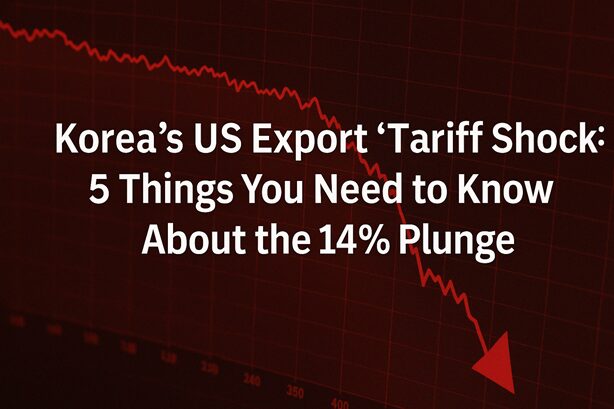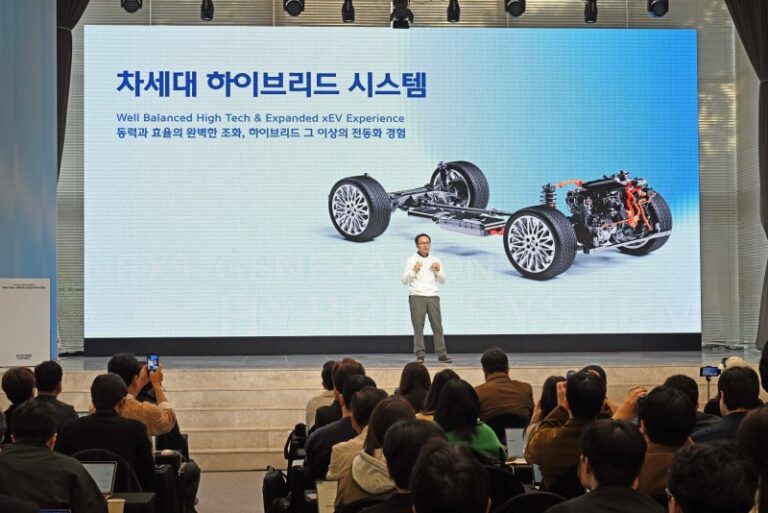Korea’s US Export “Tariff Shock”: 5 Things You Need to Know About the 14% Plunge
As of April 21, 2025, Korean exports to the United States have taken a significant hit, plummeting by 14.3% year-over-year, bringing to life what analysts are calling a “tariff shock.” This dramatic decline comes as part of a broader 5.2% drop in Korea’s overall exports, raising serious questions about the future trajectory of Korea’s export-driven economy. What exactly is happening, and what does it mean for global trade relations?
The Numbers Tell a Troubling Story
Korean exports have declined significantly across multiple sectors, with only semiconductors showing growth among major export categories.
- Data from April 1-20 shows total exports at $33.9 billion, representing a 5.2% year-over-year decline
- Among Korea’s top 10 export items, semiconductors were the lone bright spot with 10.7% growth
- The remaining 9 major export categories all registered declines, with US-bound exports particularly hard hit
America’s New Tariff Reality
The unilateral imposition of tariffs by the United States has effectively neutralized benefits previously enjoyed under the Korea-US Free Trade Agreement.
- The US has implemented a base 10% tariff on certain Korean goods, with plans to increase this to 25% as part of a “reciprocal tariff” policy
- This radical shift in trade policy has created immediate disruptions across multiple export sectors
- Korean exporters are struggling to adapt to this new protectionist environment after years of relatively free trade
Which Industries Are Taking the Biggest Hit?
Export declines are not uniform across sectors, with some industries facing more severe challenges than others.
- Passenger vehicles have seen exports drop by 6.5%, a concerning figure for Korea’s vital automotive sector
- Petroleum products experienced a dramatic 22.0% decline, reflecting both tariff impacts and shifting energy markets
- The export slump extends beyond the US market, with shipments to China down 3.4% and Vietnam down 0.2%

The Import Side of the Equation
While exports have declined, imports have fallen even more sharply, creating a complex trade balance situation.
- Imports through mid-April totaled $34 billion, marking an 11.8% year-over-year decline
- Crude oil imports plunged 29.5% while semiconductor imports decreased by 2.0%
- Despite the overall import decline, purchases from Japan and Vietnam increased by 3.2% and 6.3% respectively
- The current trade deficit stands at a relatively modest $100 million, as imports have fallen faster than exports
Strategic Implications for Korean Businesses
Companies heavily reliant on US exports face tough decisions about market diversification and pricing strategies.
- Export-dependent businesses must now factor in higher tariff costs when pricing products for the US market
- Automotive exports, which have long been a cornerstone of Korea-US trade, face particular vulnerability to tariff increases
- Experts believe the export decline trend could continue if further tariff escalation occurs

The sudden implementation of new tariff policies has created significant headwinds for Korean exporters. While it’s too early to determine if this represents a temporary adjustment or a long-term structural change in trade patterns, businesses are already scrambling to develop adaptation strategies. The coming months will be crucial in determining whether Korean exporters can navigate this challenging new landscape.
Keywords
US-Korea trade, tariffs, export decline, trade deficit, protectionism
Hashtags
#TariffShock #KoreanExports #TradeWar #GlobalTrade #USKoreaRelations
한국어 요약
- 2025년 4월 초 기준, 한국의 대미 수출이 전년 대비 14.3% 급감하며 ‘관세 쇼크’ 현실화
- 미국의 일방적 관세 부과로 한-미 FTA 혜택이 무력화되고 있으며, 10%에서 최대 25%까지 관세 인상 예정
- 반도체(10.7% 증가)를 제외한 주요 수출품목 모두 감소, 특히 승용차(-6.5%)와 석유제품(-22.0%) 타격 심각
- 무역수지는 1억 달러 적자를 기록했으며, 이러한 관세 충격이 장기화될 경우 한국 경제에 심각한 영향 우려






